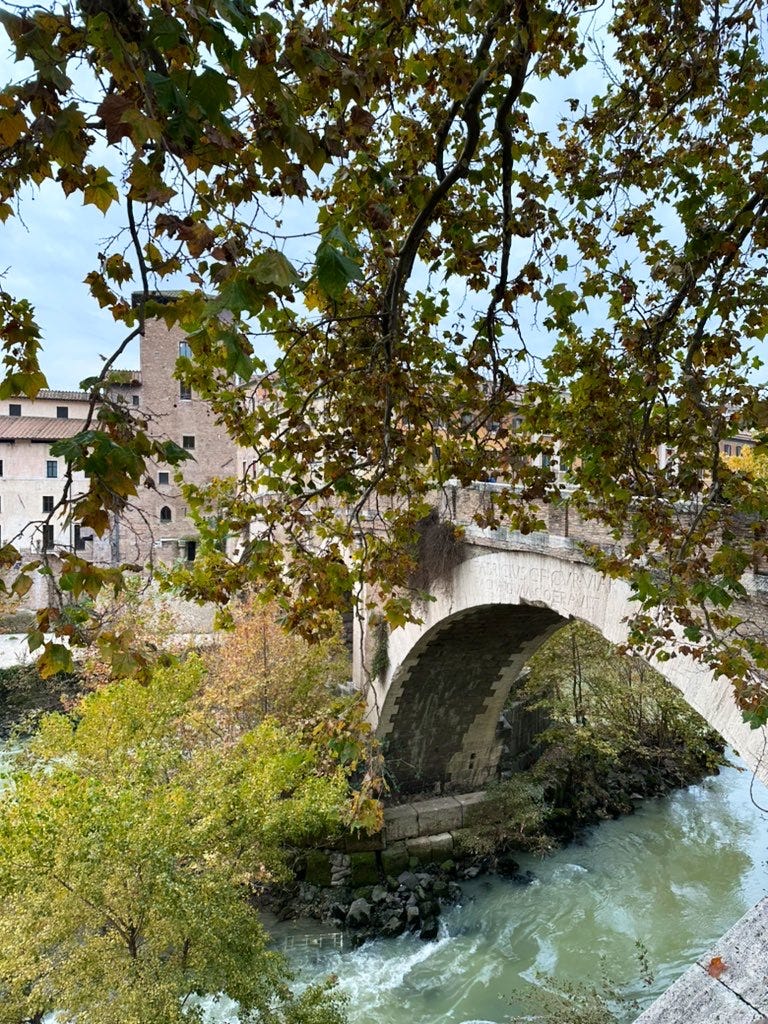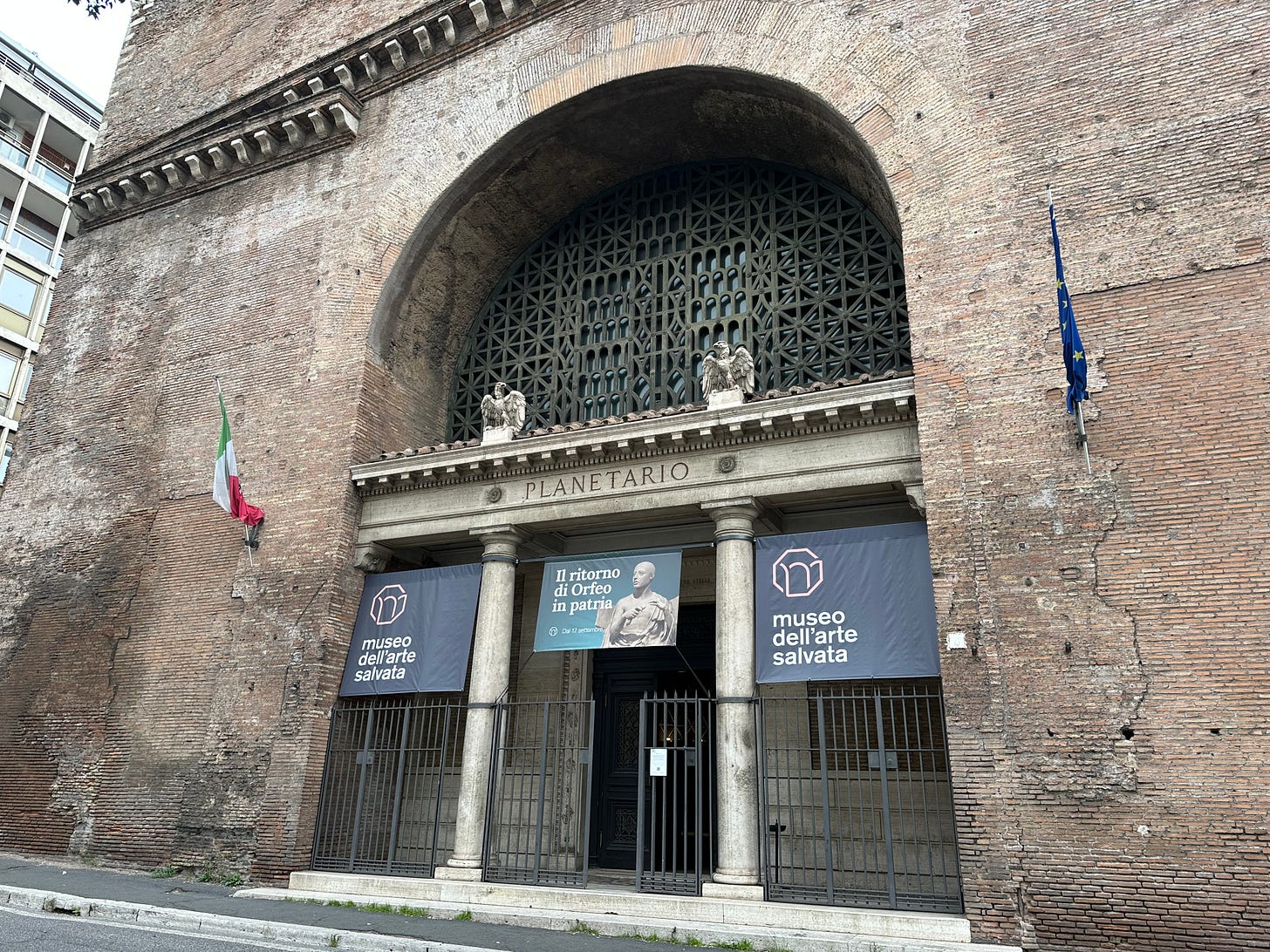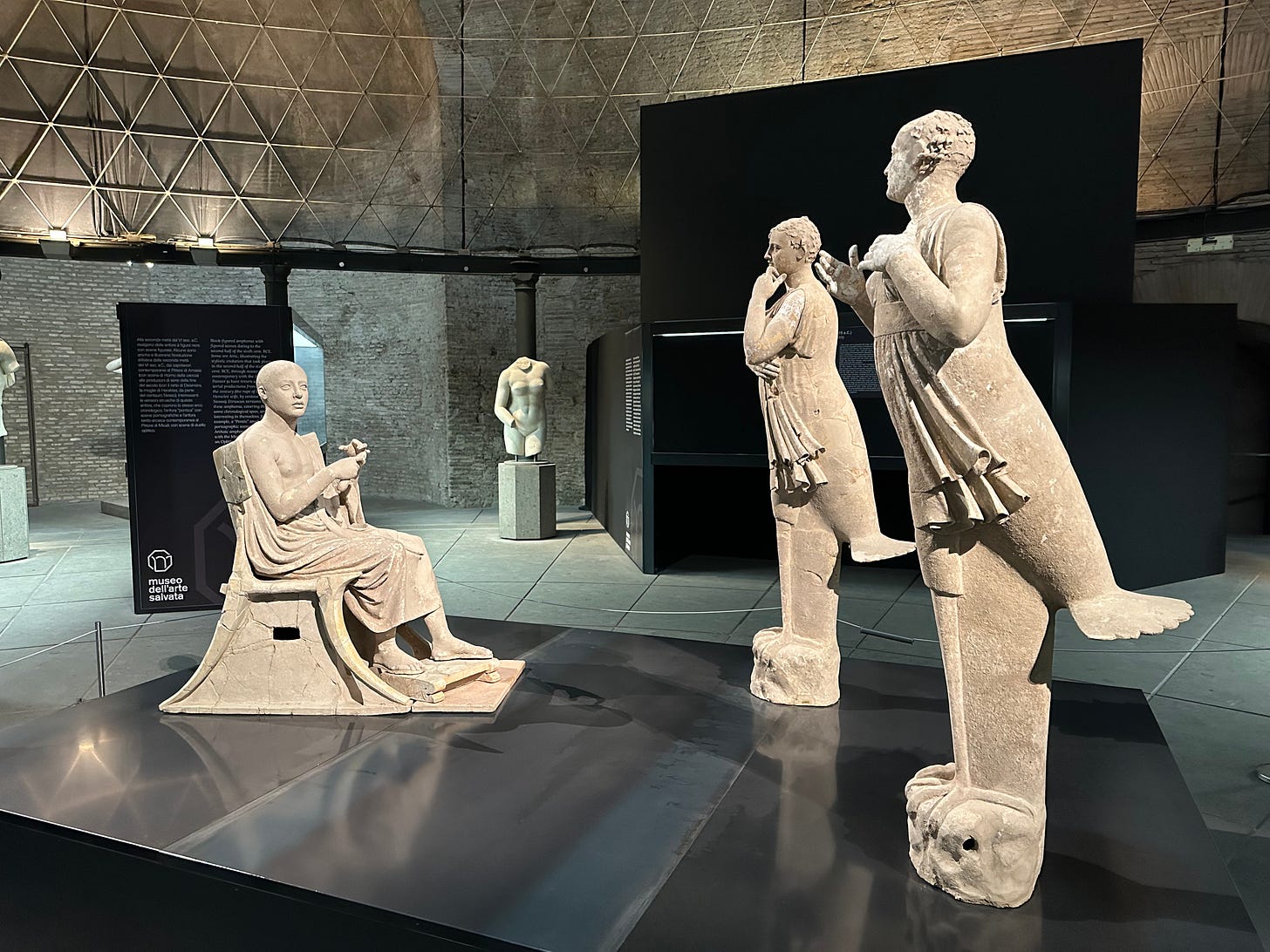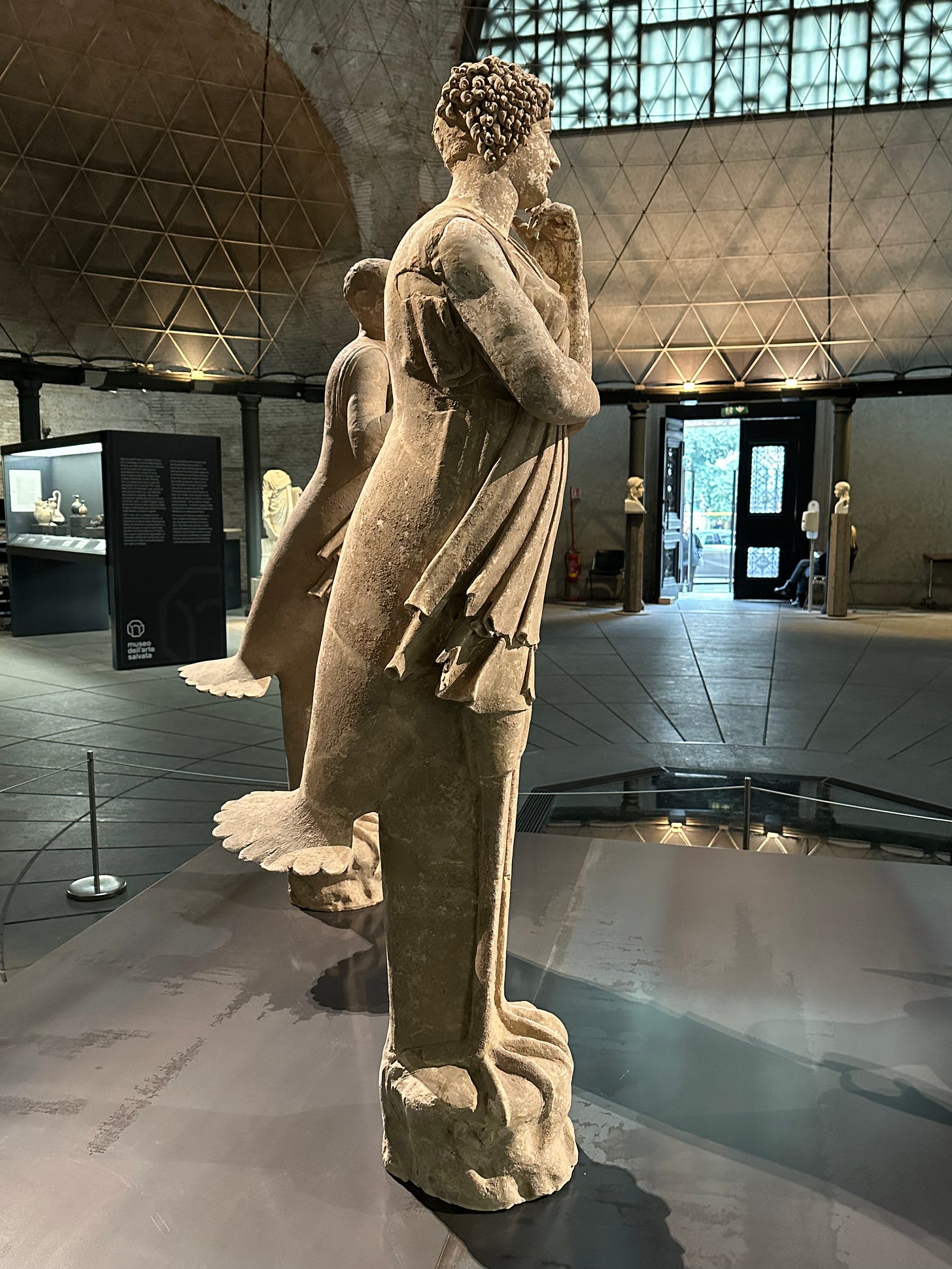And so, somehow, 2022 is already drawing to a close. Across Rome Christmas lights are going up and I will be doing a festive live-streamed walk in the city centre on Saturday 10th December at 3.30pm Rome time (eg that’s 2.30pm UK & Ireland, 9am ET, 6am PT). It will, as my past live-streamed walks have been, be via Zoom webinar (which means you can be in your PJs and no-one will know) with written questions via Q&A function). The cost is €25 per screen connection for as many people as you like, and a recording will be available if you can’t make it live. To book please email info@understandingrome.com, and please let me know in the comments below if there’s anything you’d especially like to see and I’ll do my best to fit it in.
This week I finally made a foray to the Museo dell’Arte Salvata in the Octagonal Hall of the Baths of Diocletian (where one picks up the ticket), once Rome’s Planetarium, where pieces recovered from illicit trafficking of antiquities are on display. It opened in June this year and at present the star turn is an almost life-size group of Greek terracotta sculptures showing Orpheus and two Sirens.
Dating to the fourth century BCE they were looted in the 70s from an archeological site near Taranto in Puglia, where it is presumed they were made. Their excavation and sale has been connected to organised criminal activity and they were first exported to Switzerland, and subsequently bought by the Getty Museum in Los Angeles. They are thought to have decorated either a funerary monument or a religious sanctuary but, owing to the illicit nature of their discovery, their exact find site is unknown. Even when pieces are recovered, this removal from the original context is one of the great cultural losses of illegal excavations.
Following archaic iconography, the Sirens are shown as hybrid bird/fish/women as described here in the relevant tale by the third century BCE poet Apollonius of Rhodes in his Argonautica:
“The brisk wind propelled the ship, and soon they spotted the beautiful island of Anthemoessa, where the clear-voiced Sirens, the daughters of Achelous, enchanted anyone who moored there with their sweet songs and destroyed him. The beautiful muse Terpsichore, had lain with Achelous and borne them. For a time they looked after Demeter's mighty daughter and played with her while she was still a maiden. By now they seemed to be partly birds and partly young women. Always on the lookout from their vantage point with its fine harbour, they often robbed many men of their sweet homecoming, consuming them with languor. Without hesitation, they sent forth their delicate voices. They were about to cast the cables from their ship onto the beach, had not Thracian Orpheus, Oeagrus' son, strung his Bistonian lyre in his hands and rung out the rapid beat of a lively song, so that the men’s ears might ring with the sound of his strumming, and the lyre overpowered their virgin voices. Both Zephyr and the resounding waves bore the ship onwards as the maidens sent forth their indistinct speech.”
The group will be returning to the excellent Archeological Museum of Taranto shortly, returning to its home which I think is splendid.
All best from Rome, Agnes








Looking forward to live-streamed walk with you in Rome - John says that’s ESDT around midnight or 1am-ish so will set alarm and def be in Pj’s.
Ci vediamo Domenica mattina.
fabulous statues love the fish tails and bird claws.